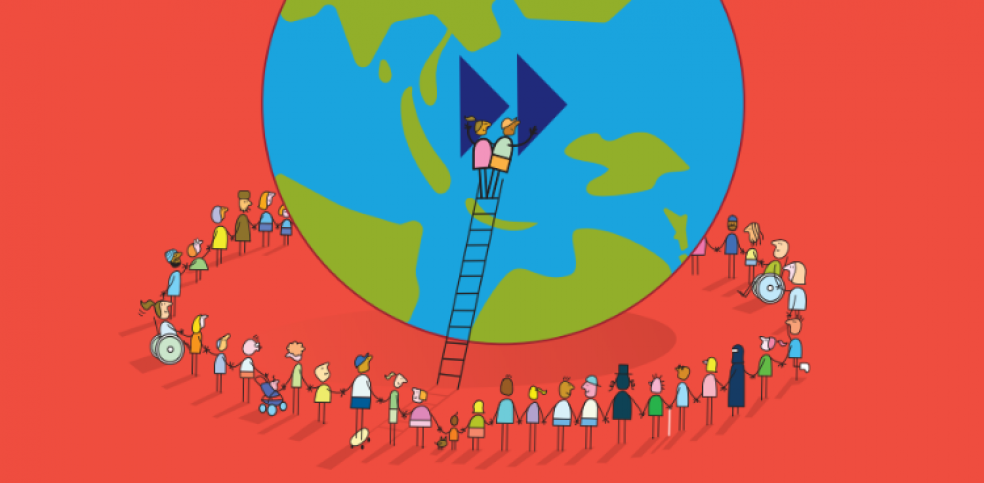The world has changed and will only keep changing, which means the very context in which leaders try to lead their teams is hugely different.
In the Asia-Pacific, futurists have identified three megatrends emerging alongside each other, outlined in the Fast Forward report by Deloittecommissioned by Chartered Accountants Australia New Zealand.
The megatrends are:
- Diversity of markets: this means diversity of customers, and movement of wealth, influence, people and power from the west to east.
- Diversity of ideas: in a globally hyper connected world, innovation is everything. Anyone can be in the market, and anyone’s idea can spread like wildfire across the world.
- Diversity of talent: future talent will be increasingly global, mobile and diverse.
ADAPTING REQUIRES SIX TRAITS
The successful leaders of today – and the future – are those that can handle this diversity. These leaders are inclusive and have six signature straits. Global Women chatted with Deloitte Australia partner Juliet Bourke, who co-authored the report with Deloitte Australia director Bernadette Dillon, as to just what these traits are:
Trait 1: Commitment. These leaders are committed to staying on their course, because being inclusive is a challenge. It takes energy, effort, and time. Why do they commit? There is a business case for it, of course, but firstly, it aligns with their personal values of fairness and respect. Inclusive leaders are deeply committed to creating an environment in which everyone has chance to reach their personal potential. These leaders will step up and have that uncomfortable conversation around “I don’t really believe we’re being respectful”, or “I don’t think our practices are fair”.
Trait 2: Courage. Being vulnerable about themselves, saying “I don’t have all answers, I’m trying to be inclusive of diversity and I’m not perfect.” This is quite a contrast from the classic leader who tries to act like a hero and confident ‘knower’. Talking about imperfections involves personal risk taking. Being vulnerable about learning alongside others creates a culture around these leaders in which no one else has to pretend either. It also takes courage to challenge the status quo which currently advantages some people and leaves others behind – for example, the way organisations evaluate “potential” or design jobs with the expectation of constant availability.
Trait 3: Cognisance. Inclusive leaders are deeply aware of biases they hold, and they work on correcting them. Not just eliminating stereotypes about gender and race, for example, but social and information biases as well. For example, correcting for affinity bias, which leads people to connect with others who are more similar to themselves. Being conscious and correcting for biases helps leaders to be more inclusive of differences.
Trait 4: Deep Curiosity about other people’s points of view, because they know can’t solve complex problems alone. In a world of diverse ideas, inclusive leaders know they need other people for that extra 20 percent of value. For this, they need that sense of curiosity to ask more questions rather than just give answers. Inclusive leaders have a learning mindset and are constantly seeking new and different insights.
Trait 5: Cultural intelligence. Not everyone sees the world through the same cultural lens. Inclusive leaders know the way they perceive the world is a reflection of their own background and experiences. They really try to understand someone else’s cultural frame of reference and relinquish assumptions and stereotypes. They also adapt to different contexts by adjusting their behaviours, taking a “When in Rome…” attitude. This creates an environment around them in which others feel comfortable expressing their point of view.
Trait 6: An inclusive leader’s role is to facilitate Collaboration amongst people who are very different. In context of diversity, collaboration is much more challenging. This is because there are so many aspects to people – the way we approach problems, work across time zones, communicate in different styles, have differing opinions. The chances of conflict in a diverse group are much higher than in a homogenous group, but to get high performance on a complex task, you need a heterogeneous group. Putting in the time up front to create a collaborative culture will reap that reward.
THE CALL TO ACTION
To futureproof themselves, Bourke asks leaders for two things:
The first is to give themselves a rating against each of the traits, on a scale of 1-5. And to get a reality check, they then need to ask themselves, “If someone else was going to rate me, what do I think they’d rate?”
The second task is to prioritise the trait they think they need to work on, and create a strategy for that.
“For example, maybe it’s curiosity about other people’s points of view. When you’re listening to someone else, write down questions, ask yourself ‘Why they would be saying that?’, ‘What must they believe for their ideas to be true?’, and then push yourself to faithfully replay the other person’s ideas, just to make sure you really have been curious and attentive,” says Bourke.
“The Chief of the Australian Army Angus Campbell, and the CEO of Qantas Alan Joyce have both developed ‘curiosity’ strategies. They both are very knowledgeable, yet when they go into meetings both have very deliberate strategies to listen to others. They hold back from talking first, to make themselves talk last. This way they are demonstrating that they are listening to other people’s point of view, and getting people to speak to their own point of view. President Obama apparently does the same thing – asking each of his advisers to explain their point of view until he is sure that he understands it accurately. Then moving onto the next adviser. When he is clear on each of the individual views, he will do his own thinking and express his point of view.”
